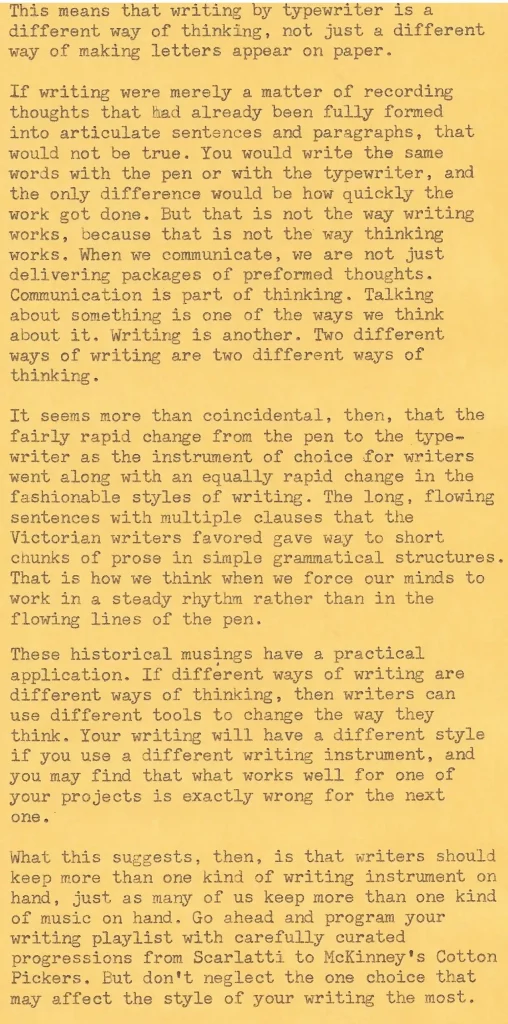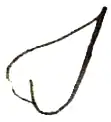

Transcribed below. The typewriter is a 1965 Smith-Corona Sterling with Elite type.
How Typewriters Changed the Way We Think
Anyone who does a lot of writing has noticed that circumstances affect how the writing comes out. Poets go to sit in meadows of flowers by flowing streams to make their lines come out all flowery and flowy. Gothic novelists seek out ruined abbeys to inspire them. If you ask for writing advice from the Internet (which is a perilous thing to do, but go ahead and try if you like), you can find all sorts of suggestions about what music to play while you write, or what scent you should have wafting through the air.
It seems obvious that nothing more directly affects the feeling of writing than the writing instrument itself. For centuries, writing was done with pens dipped in ink, and “writing” meant moving the pen in a complex dance that would leave a trail of legible marks on the paper.
Then came the typewriter, and “writing” for typewriter users meant an entirely different kind of motion.
Even if nothing else changed, just the difference in writing motion ought to have some effect on the kind of writing produced. But the difference in motion implies some other important differences as well.
Two of the most obvious differences are speed and rhythm. Writing goes much faster with a typewriter, and everyone who uses a typewriter for any length of time discovers that typing goes best in a very steady rhythm.
This means that writing by typewriter is a different way of thinking, not just a different way of making letters appear on paper.
If writing were merely a matter of recording thoughts that had already been fully formed into articulate sentences and paragraphs, that would not be true. You would write the same words with the pen or with the typewriter, and the only difference would be how quickly the work got done. But that is not the way writing works, because that is not the way thinking works. When we communicate, we are not just delivering packages of preformed thoughts. Communication is part of thinking. Talking about something is one of the ways we think about it. Writing is another. Two different ways of writing are two different ways of thinking.
It seems more than coincidental, then, that the fairly rapid change from the pen to the typewriter as the instrument of choice for writers went along with an equally rapid change in the fashionable styles of writing. The long, flowing sentences with multiple clauses that the Victorian writers favored gave way to short chunks of prose in simple grammatical structures. That is how we think when we force our minds to work in a steady rhythm rather than in the flowing lines of the pen.
These historical musings have a practical application. If different ways of writing are different ways of thinking, then writers can use different tools to change the way they think. Your writing will have a different style if you use a different writing instrument, and you may find that what works well for one of your projects is exactly wrong for the next one.
What this suggests, then, is that writers should keep more than one kind of writing instrument on hand, just as many of us keep more than one kind of music on hand. Go ahead and program your writing playlist with carefully curated progressions from Scarlatti to McKinney’s Cotton Pickers. But don’t neglect the one choice that may affect the style of your writing the most.

Leave a Reply